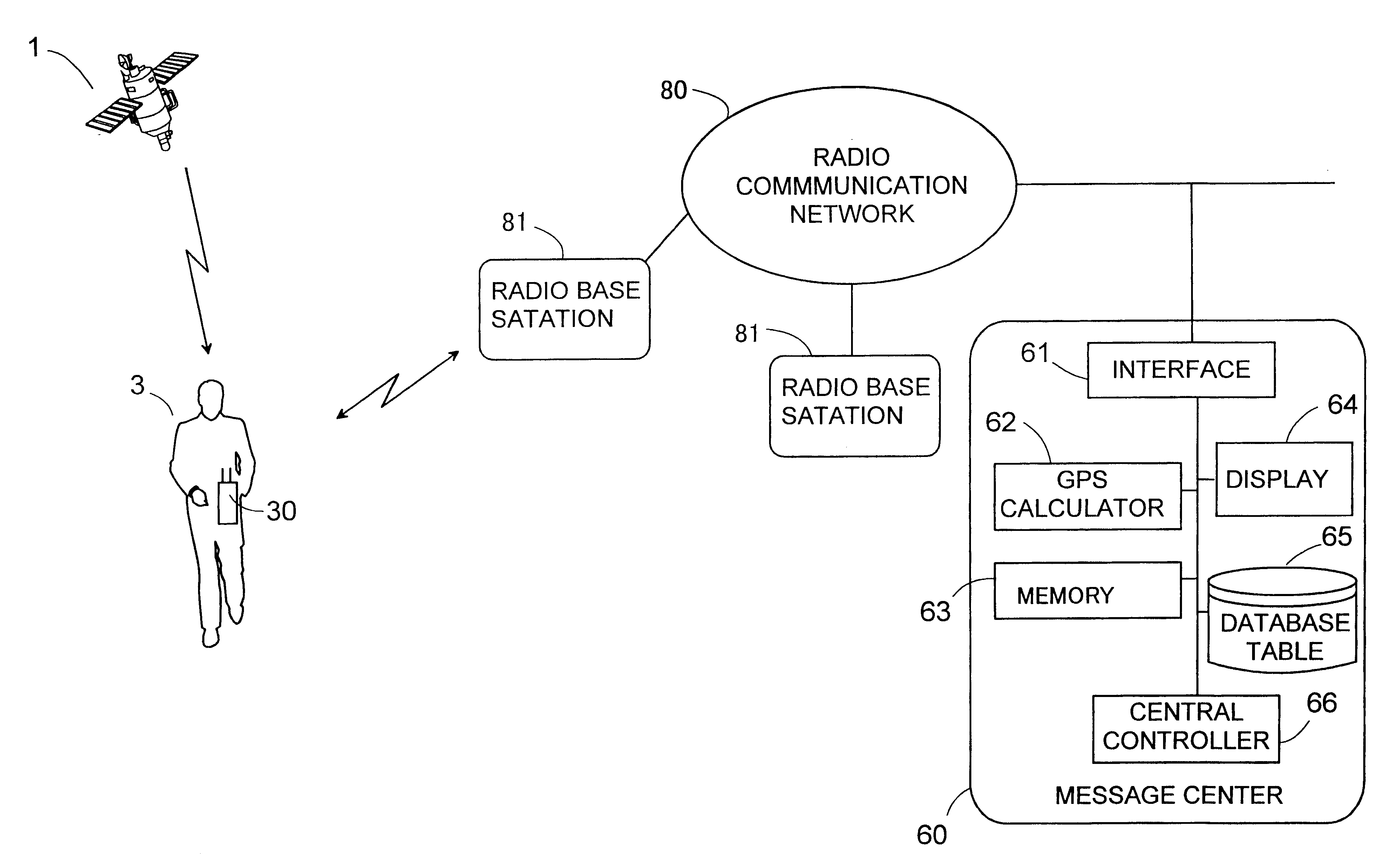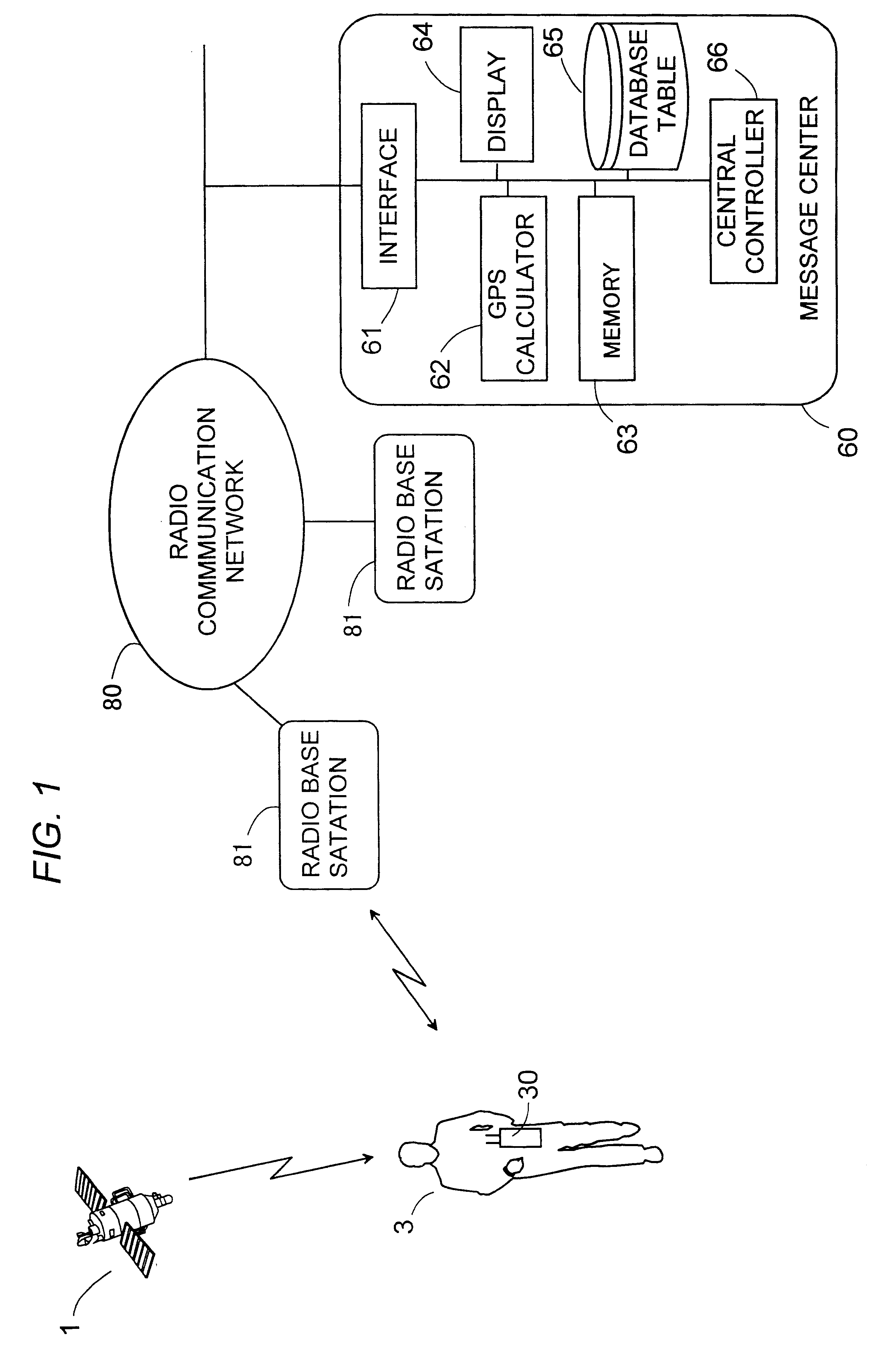Support request processing system using GPS data for locating a person requesting a support
a technology of support request and processing system, which is applied in the direction of vehicle position indication, navigation instruments, instruments, etc., can solve problems such as difficulty in rescuing peopl
- Summary
- Abstract
- Description
- Claims
- Application Information
AI Technical Summary
Benefits of technology
Problems solved by technology
Method used
Image
Examples
Embodiment Construction
Referring now to FIG. 1, there is shown a support request processing system using GPS data from GPS satellites for locating a person requesting a support. The system utilizes a global positioning system (GPS) to locate the person in trouble and give a warning message, prompting to take a suitable support or rescue. The system is particularly intended to supervise the person 3 who possibly moves into building or the like place where the GPS satellites 1 cannot be reached. The system includes a mobile terminal 10 adapted to be carried by a person and capable of acquiring GPS data from the GPS satellites 1, and a message center 60 receiving the GPS data from the mobile terminal 10 to calculate a position of the mobile terminal 60, i.e., the person 3 carrying the same. The mobile terminal 10 has a capability of issuing a support-request signal which is transmitted to the message center 60 over a public radio communication network 70 having a plurality of radio base stations 71. The netw...
PUM
 Login to View More
Login to View More Abstract
Description
Claims
Application Information
 Login to View More
Login to View More - R&D
- Intellectual Property
- Life Sciences
- Materials
- Tech Scout
- Unparalleled Data Quality
- Higher Quality Content
- 60% Fewer Hallucinations
Browse by: Latest US Patents, China's latest patents, Technical Efficacy Thesaurus, Application Domain, Technology Topic, Popular Technical Reports.
© 2025 PatSnap. All rights reserved.Legal|Privacy policy|Modern Slavery Act Transparency Statement|Sitemap|About US| Contact US: help@patsnap.com



